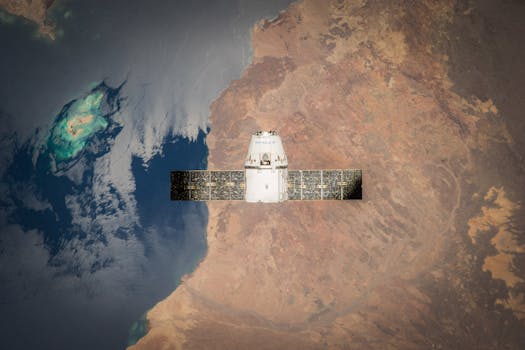
Eyes in the Sky: Advanced Technologies Transforming Earth Observation
Eyes in the Sky: Advanced Technologies Transforming Earth Observation, the field of Earth observation has undergone a significant transformation in recent years, driven by advances in satellite technology, remote sensing, and data analytics. These developments have enabled us to monitor and understand our planet in unprecedented detail, with far-reaching implications for fields such as environmental monitoring, urban planning, and disaster response.
The use of satellite technology for Earth observation dates back to the 1960s, when the first weather satellites were launched. Since then, the technology has evolved rapidly, with the development of more sophisticated sensors, higher-resolution imaging, and increased satellite lifespan. Today, there are thousands of satellites in orbit around the Earth, collecting vast amounts of data on everything from ocean currents and sea level rise to deforestation and crop yields.
Advances in Satellite Technology
One of the key drivers of the Earth observation revolution is the development of new satellite technologies. For example, the launch of the European Space Agency’s Sentinel-2 satellite in 2015 marked a major breakthrough in high-resolution imaging, with the ability to capture images of the Earth’s surface at a resolution of just 10 meters. Similarly, the NASA’s Landsat 8 satellite, launched in 2013, has been instrumental in monitoring land use and land cover changes, with its high-resolution thermal infrared sensor and multispectral imager.
Another area of significant advancement is the development of small satellites, also known as CubeSats. These tiny satellites, which are often no larger than a shoebox, are relatively inexpensive to build and launch, making them an attractive option for researchers and companies looking to collect specific types of data. For example, the Planet Labs constellation of small satellites has been used to monitor deforestation, track crop yields, and even detect oil spills.
Applications of Earth Observation
The applications of Earth observation are diverse and widespread, with significant impacts on many fields. For example, in environmental monitoring, satellite data is used to track changes in ocean currents, sea level rise, and ice sheet melting. This information is crucial for understanding the impacts of climate change and developing strategies for mitigation and adaptation.
In urban planning, satellite data is used to monitor urban growth and development, track changes in land use and land cover, and identify areas of high population density. This information is essential for developing sustainable urban planning strategies and ensuring that cities are equipped to meet the needs of their growing populations.
In disaster response, satellite data is used to quickly assess damage and identify areas of need. For example, following a natural disaster such as a hurricane or earthquake, satellite images can be used to identify areas of destruction, track the movement of people, and prioritize relief efforts.
Conclusion
In conclusion, the field of Earth observation is undergoing a significant transformation, driven by advances in satellite technology, remote sensing, and data analytics. The applications of Earth observation are diverse and widespread, with significant impacts on many fields, from environmental monitoring and urban planning to disaster response and recovery. As the technology continues to evolve, we can expect to see even more innovative applications of Earth observation, enabling us to monitor and understand our planet in unprecedented detail.